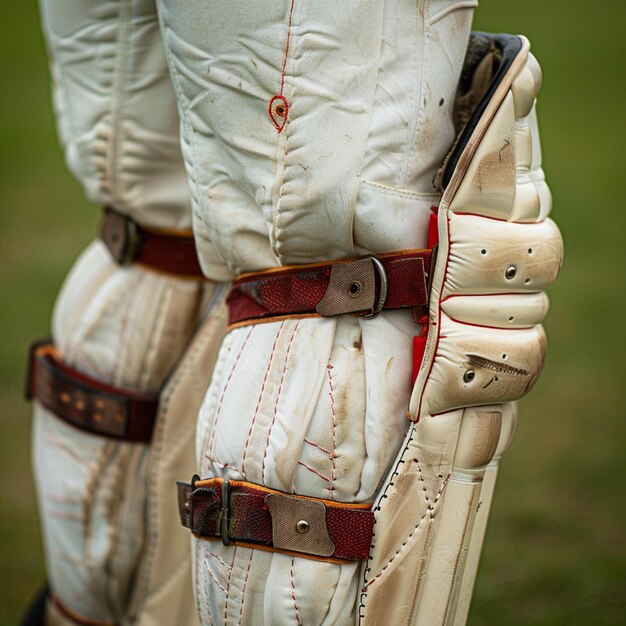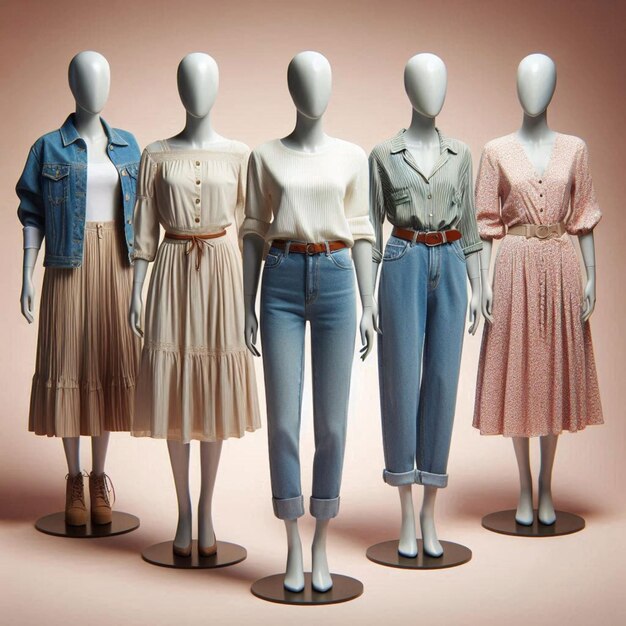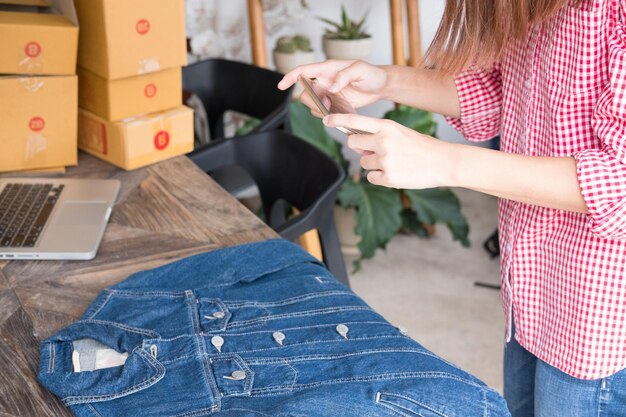Quick Read
Why Are Women’s Pockets So Small? An In-depth Examination of History, Perception, and Design
The question of why women’s pockets are so small has long been a topic of discussion and debate, with roots deep in history, perception, and design. Let us embark on an
History: A Brief Overview
Historically, the size of women’s pockets has been a reflection of societal norms and expectations. In medieval Europe, for instance, women wore long dresses with ample fabric that could be used to hide small items. The
pouches or hidden compartments
in women’s clothing served not only functional purposes but also symbolized wealth and status.
As time progressed, societal expectations evolved, leading to more restrictive clothing for women. The 18th and 19th centuries saw the rise of corsets and hoop skirts that significantly limited pocket size, as these garments were designed to accentuate a woman’s figure.
Perception: The Role of Gender Stereotypes
Perceptions about women’s roles and abilities have also influenced the size of their pockets. A long-held belief that women are more prone to losing items or misplacing things has been used as justification for designing smaller pockets for them. This stereotype is based on
gender roles and expectations
that have persisted over centuries, with women often being relegated to domestic tasks and men taking on more public roles.
Moreover, the association of smaller pockets with femininity has further reinforced this trend. The belief that women do not need large pockets because they carry fewer and smaller items is a common perception that continues to shape pocket design for women’s clothing.
Design: The Quest for Functionality and Comfort
In recent years, there has been a growing awareness of the need to challenge these historical, perceptual, and societal norms that have led to the small size of women’s pockets. The quest for
functionality and comfort
has resulted in innovative designs that cater to women’s needs, such as hidden pockets with expandable compartments or external pockets that can be easily accessed.
Conclusion: Embracing Change and Empowerment
In conclusion, understanding the historical, perceptual, and design factors that have influenced the size of women’s pockets offers valuable insights into this longstanding issue. By recognizing these influences and challenging them, we can embrace change and empower women to reclaim their space in both the literal and metaphorical senses.
Exploring the Conundrum of Women’s Small Pockets: A Long Overdue Discussion
I. Introduction
The common complaint about women’s small pockets is an age-old issue that continues to surface in various forms, from personal experiences to social media discussions.
Brief explanation of the common complaint
Many women have experienced the frustration of trying to fit their essentials into tiny pockets, designed primarily for aesthetics rather than functionality. From smartphones and wallets to keys and lipstick tubes, women’s clothing often lacks the storage capacity that men’s clothing enjoys.
Personal experiences
Personally, we have all encountered this issue at some point in our lives – digging through a bag for a pen or having to carry an extra bag just for our phone. It is a daily inconvenience that adds unnecessary stress.
Social media discussions
Recently, social media has become a platform for expressing frustration and sparking discussions around the issue. From #PocketSizeProblems to #EqualityOfPockets, women have taken to social media to share their experiences and demand change.
Importance and significance of the question: history, perception, and design
The issue of small pockets for women is not just a modern-day problem but has deep roots in history. The question of why women’s clothing designs have consistently overlooked functional pockets is a complex one, involving perception and social norms.
History
Historically, women’s clothing has been designed primarily for aesthetics and to accentuate the female form, often at the expense of functionality. The trend continues today, with fashion designers focusing on creating clothes that look good rather than considering the practical needs of their customers.
Perception
Moreover, there is a perception that women are more interested in fashion and less concerned about functionality. This stereotype perpetuates the idea that women should prioritize how they look over how they function, leading to designs that fail to meet their practical needs.
Design
The question of why women’s pockets are small is not just about history and perception, but also design. Pockets for women have often been designed to be smaller and more decorative, with many clothes featuring fake pockets that do not actually provide any functional use.
Conclusion
The issue of small pockets for women is a complex one that requires a deeper understanding of the historical, cultural, and societal factors that have contributed to its existence. As technology continues to advance and women’s roles in society evolve, it is time for fashion designers to reconsider the importance of functional pockets in their designs. Only then can we truly address this long-standing issue and ensure that women have the practical tools they need to live their lives comfortably and efficiently.

Historical Context
Pockets, small enclosed spaces in clothing, have a rich and intriguing history that mirrors the social, cultural, and economic transformations of European fashion over several centuries.
Early Pockets in Clothing for Both Men and Women
Origins of pockets in European fashion (14th – 16th centuries): The earliest records of clothing with functional pockets date back to the late Middle Ages, around the 14th century. Initially, pockets were added primarily to the garments of men, as they led active lives involving hunting, travel, and trade. These pockets were usually located in the waist or hip area and could be accessed through openings or buttons. In contrast, women’s clothing during this period lacked practical pockets, as they were designed for more formal occasions and did not allow for such conveniences.
Function and Significance of Pockets During This Period
The function of pockets during this period was primarily practical, allowing men to carry essential items such as money, tools, and small documents. However, their significance extended far beyond mere utility. Pockets were symbols of power and status. The larger the pocket, the more wealth and influence a man could display. As European fashion evolved over time, pockets continued to serve both functional and decorative purposes.
Evolution of Pocket Sizes for Women and Men Throughout History
17th and 18th Centuries: Shift from Functional to Decorative Pockets
During the 17th and 18th centuries, there was a significant shift in the significance of pockets, particularly for women. As European society became more urbanized, and social engagements moved from the countryside to the city, clothing became increasingly decorative. Women’s pockets during this period were often hidden and ornamental, designed to be sewn into the lining of their dresses. The size and shape of these pockets were less important than their visual appeal. Meanwhile, men’s clothing continued to incorporate functional pockets, albeit with more refined designs.
19th Century: Increasing Emphasis on Femininity and Modesty
In the 19th century, societal norms began to emphasize femininity and modesty, leading to a decrease in the size of women’s pockets. Instead, they were often designed as small, decorative features that were sewn into the side seams or hem of skirts. These pockets were meant to be barely functional and primarily symbolic. However, some women’s garments, such as trousers, continued to include more practical pockets that could accommodate essential items.
20th and 21st Centuries: Changing Societal Roles and Pocket Sizes
The 20th and 21st centuries have seen a renewed focus on practicality in clothing, including pockets. As women’s roles expanded beyond the domestic sphere to include education, employment, and public life, functional pockets became essential for carrying essential items such as keys, phones, and makeup. Similarly, men’s clothing has seen a shift towards larger, more practical pockets to accommodate the increasing number of personal items that modern life requires.

I Perception and Stereotypes
Role of Gender Stereotypes in Women’s Clothing Design
Gender stereotypes have played a significant role in the design of women’s clothing throughout history. Historically, women were often expected to dress modestly and demurely, with an emphasis on femininity and elegance. This is evident in the voluminous skirts and corsets of the Victorian era, which served to accentuate the female figure while also limiting its movement. Similarly, gendered color palettes, such as pink for girls and blue for boys, have long perpetuated stereotypes about what is appropriate or desirable for each gender.
The Impact of Societal Expectations on Women’s Pockets
The impact of societal expectations extends beyond clothing design to the very practical matter of women’s pockets. Historically, women have been perceived as consumers rather than producers, leading to a focus on clothing that is attractive and fashionable rather than functional. This can be seen in the fact that women’s clothing has traditionally lacked pockets, or they have been small and inconveniently placed. Even today, many designers continue to overlook the importance of functional pockets for women, instead opting for decorative ones or none at all.
The Role of Marketing and Consumer Demand
Marketing and consumer demand play a significant role in perpetuating these gender stereotypes. Advertising and marketing strategies often rely on gendered imagery and expectations to sell products, with women being portrayed as sex objects or mothers, while men are depicted as strong and powerful. Consumer preferences can also reinforce these stereotypes, with women often choosing clothing that conforms to societal norms rather than challenging them. However, there are signs of change on the horizon, with more and more designers and consumers demanding functional and stylish clothing for women that does not perpetuate harmful gender stereotypes.

Design and Functionality
Reasons for Small Pockets in Women’s Clothing: The issue of small pockets in women’s clothing has been a subject of debate for decades. Economic considerations have long played a role in the design of women’s garments, with manufacturers arguing that larger pockets add to the production cost and ultimately increase the price of the clothing. Technological limitations have also been a factor, as traditional sewing methods and fabrics limit the size and depth of pockets that can be incorporated into women’s clothing without compromising the overall design.
Design Solutions to Address the Issue of Small Pockets
To address the issue of small pockets in women’s clothing, designers have been exploring innovative pocket designs. Some new pocket designs feature hidden or adjustable compartments that can be expanded to fit larger items. Others use unconventional materials like elastic or mesh to create stretchy pockets that can accommodate bulky items.
The Role of Technology in Improving Pocket Functionality
The advent of new technologies has opened up new possibilities for improving pocket functionality. Advancements in textiles and materials, such as waterproof, breathable fabrics, have made it possible to create pockets that are both functional and stylish. Smartphone-compatible pockets, with special cutouts or compartments designed specifically for phones, have become a must-have feature in modern clothing.
Balancing Design, Functionality, and Fashion Trends
However, it’s important to note that design, functionality, and fashion trends are not mutually exclusive. Balancing all three is key to creating clothing that women truly want and need. Many designers are now focusing on creating pockets that are not only functional but also stylish, seamlessly blending design and functionality without compromising the overall aesthetic of the clothing.

Conclusion
In this article, we have explored the historical context and implications of gendered clothing design, specifically focusing on women’s fashion. Bodice bindings, corsets, and high heels are just a few examples of how women’s clothing has been designed with the intent to restrict or modify their bodies. These practices have perpetuated harmful stereotypes and limited the freedom and comfort of women.
Recap of Main Points Discussed in the Article
We began by discussing the historical origins of gendered clothing design, including the role of social norms and power structures. We then examined how these practices have evolved over time, with a focus on women’s fashion. We also explored the impact of gendered clothing design on body image and self-esteem, as well as its connection to gender inequality.
Implications for the Future of Women’s Clothing Design
Moving forward, it is crucial that we encourage a more inclusive and functional approach to women’s fashion. This means prioritizing comfort, versatility, and functionality over restrictive designs. It also means challenging gendered assumptions and promoting gender neutrality in clothing design.
Encouraging a More Inclusive and Functional Approach to Women’s Fashion
One way to promote this change is by supporting brands that prioritize functionality and inclusivity. Brands like Patagonia, The Unzipped Project, and Lonely Lingerie are leading the way in creating clothing that is both comfortable and stylish for all bodies. Let your purchasing power be a vote for change.
Call-to-Action for Consumers, Designers, and Fashion Industry Professionals
Consumers: Be mindful of the brands you support and the clothing you purchase. Advocate for change by sharing your experiences with gendered clothing design and supporting brands that prioritize functionality and inclusivity.
Designers: Challenge the status quo by designing clothing that is functional, versatile, and comfortable for all bodies. Embrace gender neutrality and challenge harmful stereotypes through your work.
Fashion Industry Professionals: Use your platform to promote change and challenge harmful practices in the fashion industry. Advocate for inclusive and functional clothing design, and support designers who are leading the way.
Advocating for Change in the Fashion Industry
Change doesn’t happen overnight, but we can all play a role in advocating for a more inclusive and functional approach to women’s fashion. By supporting brands that prioritize these values and using our voices to demand change, we can help create a future where all bodies are celebrated and respected in the realm of fashion.




